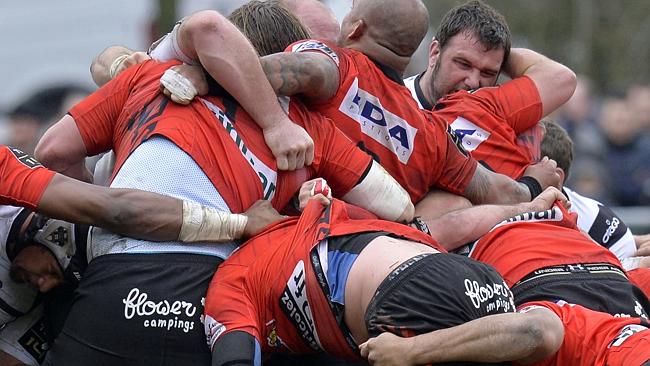Stop wasting everyone’s time: Seven tips for running a successful meeting
MANY office workers name this one thing as the bane of their existence. Here are seven tips that will save time and make your day easier.

NO ONE ever leaves a successful meeting and thinks to themselves, ‘That was too short’, or ‘Darn, we covered all the topics we needed to.’ However, there are tonnes of people coming out of meetings every day who feel they were too long or provided very little value.
As the co-CEO of a young technology start-up, I am always in meetings. When you run a meeting successfully, they contribute to the health of your organisation. However, sometimes meetings, specifically poorly executed meetings, can get in the way of more pressing business matters like building or selling.
In the spirit of productivity and running better meetings, here is a checklist of seven things that should happen in every successful meeting. Please note that I am talking about organisational meetings and not necessarily ones involving customers or investors.
THEY START ON TIME
When trying to start a meeting with various parties, way too much time is wasted on late arrivals. I’ve seen a room full of people wait around 15 minutes for one team member to show up. This shouldn’t happen.
Don’t wait for latecomers, if possible; start the meeting at the scheduled time. If you make this a precedent, you will earn a reputation for promptness and your meetings will start on time. When meetings start on time all of the participants are much happier.
THEY DON’T RUN TOO LONG
Studies have shown that the average person can pay attention in a meeting for approximately 20 minutes before daydreaming. However, either changing speakers or platforms (PowerPoint then open discussion) will be sufficient to refocus the audience. The same studies show that after 90 minutes there is significant deterioration in attention and participation.
Do your best to keep meetings short (20-30 minutes). I never ever set up meetings for longer than 60 minutes and I prefer to do stand-up meetings when possible (less than 30 minutes). Doing a stand up meeting tends to make things move more quickly, as there is more attention from the participants.
THE PURPOSE IS WELL DEFINED
Why is the meeting being held? What will it accomplish? These are all things that should be articulated by the meeting holder before the meeting ever happens.
When you walk into a successful meeting you already know what the meeting is about and/or have some sort of agenda. When the meeting’s purpose is well-defined, it allows all the participants to do the necessary research beforehand and allows everyone to save time and get the most out of the meeting.
My co-founder Jordan and I have started creating very structured PowerPoint slide decks outlining our objectives when meeting with advisers; we even send them out beforehand so everybody’s on the same page.
EVERYONE STICKS TO THE AGENDA
One of the easiest ways to waste everyone’s time and have an unsuccessful meeting is to create an agenda/list of objectives and not stick to them. Not only do you waste your time creating the objectives, you waste the time of everyone who attended the meeting.
When you run a successful meeting, it’s important that you stick to the agenda. It’s fine to stray away for a couple of minutes talking about off topic things as long as you hit all of the necessary objectives within the allotted time.
When having internal meetings with my team, I sometimes timebox certain elements (ie. “We will spend five minutes discussing customer development”) so that we make sure to hit all the objectives on the agenda.
THERE IS OPEN DISCUSSION
For a meeting to be successful there needs to be participation and open discussion from everybody in the room. Do your best to elicit engagement from individuals who tend to be shy or are less apt to give feedback.
The meeting leader’s job is to facilitate the discussion and not dominate proceedings. As a meeting leader, you should not speak more than 50 per cent of time. I do my best every meeting to drive engagements from participants by asking them questions or for their take on the subject.
The less you can speak while still covering all the objectives, the more successful the meeting will be. When a meeting isn’t dominated by any one person, the participants are more willing to contribute to the discussion.
THERE IS CLOSURE AND A FOLLOW-UP
When you leave a successful meeting, you usually take away important information or action items. At the conclusion of the meeting, the leader should review the action items and specify who’s responsible and when they should be completed.
After a successful meeting is over, there should be some sort of follow up. Whether it’s reaffirming the action items or perhaps circulating a copy of the slide deck that was used, there should always be some information disseminated to the participants.
After a meeting I always follow up with all of the participants in 24 hour and send over a summary of the meeting as well as my action items or asks.
THE CORRECT AUDIENCE IS IN THE ROOM
Even if a meeting met all the successful criteria above, it will be considered a failure if you don’t have the correct audience in the room.
Meetings can hurt the productivity of an organisation if there are individuals who gained nothing from attending, as their time could have been spent more effectively doing other things. About a month ago, I had my technology team stop attending certain finance and business development meetings that they gained little value from. Since then, they have become much more productive in building our product.
Just make sure that everyone attending your meeting is gaining value from it. When it comes to participants, quality is more important than quantity.



